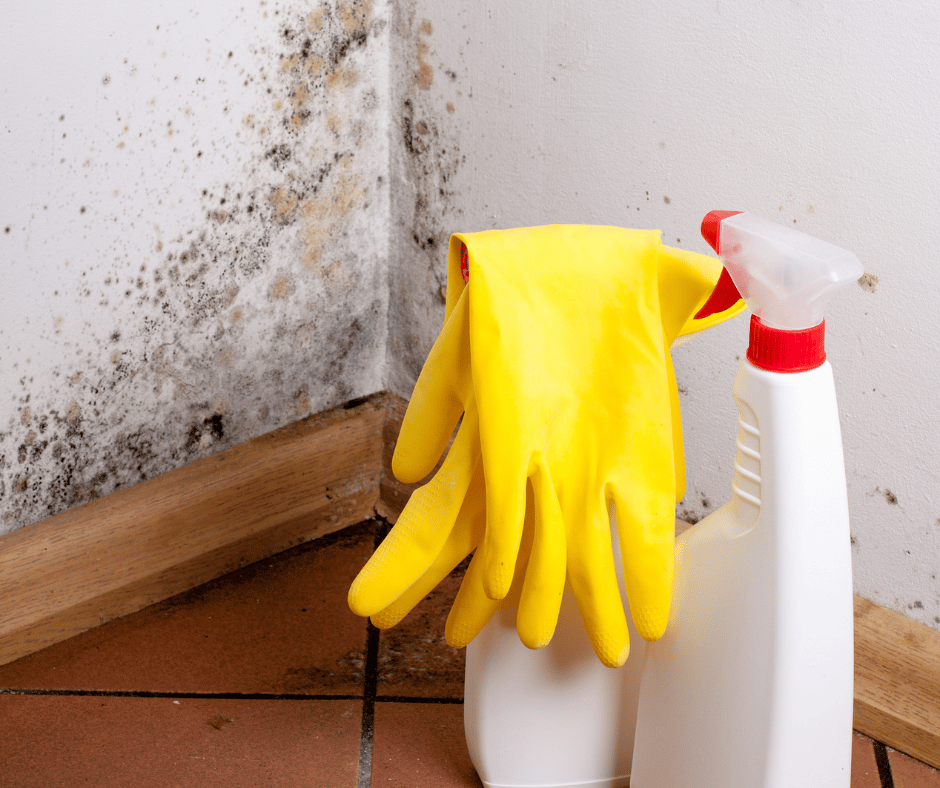6 Top Tips To Reduce Mould Growth In Student Accommodation
12th January 2023

As the winter season is in full swing, you might be thinking, “Wait a minute, mould and condensation thrives in warm and damp environments. How could mould be worse in the winter?”. As the temperature drops during the winter months, and you crank the heating up, the warm air is exposed to cold surfaces (e.g. a window, wall, mirror etc.) and creates water vapor and a build-up of moisture. Over time, this can create mould and appears as a cloud of little black dots. It’s estimated that over 70% of properties in the UK currently have mould, as everyday activities such as cooking, showering, washing and even respiration can attribute to mould build up. By any means, we are not suggesting you stop any of these things (especially breathing!) but as moisture is caused by tenants, unfortunately the prevention and cure of black mould is your responsibility.
Its not all doom and gloom! There are plenty of ways to prevent mould from happening and there are many effective techniques to get rid of it should it occur. Here at our top 6 tips to prevent mould from spreading in your home: –
1. Ensure there is adequate ventilation 🌀
Although this may seem obvious, ventilation is key when preventing mould build up in your property. This is most important when cooking, showering and drying clothes, where a simple push of a window or turning on the extractor fan can prevent potential repair costs. We understand that the last thing you want to do in winter is let cold air into the property, but many upvc windows have something called a ‘trickle vent’’ that prevents cold air coming into the property and encourages airflow out of the property. We also recommend that once you open windows (e.g. after a shower), you keep the main door shut so the condensation won’t spread to the nearby areas. We would recommend keeping bathroom doors shut for up to an hour after showering/having a bath. This can keep your heating bill down considerably whilst also preventing mould build up in key areas in your home.
2. Report any leaks to our maintenance team ⚒️
Should a leak occur for any reason, it’s essential that you report the repair to the maintenance team so that they can deal with it immediately. Leaks that go unnoticed or unreported can cause water to spread throughout the property and encourage mould if the surface remains damp.
3. Reduce moisture from cooking 🍳
Whether you’re cooking up carbonara for your housemates, or making some breakfast before uni, make sure you use pan lids to reduce the amount of steam entering the air. Don’t leave pans to boil dry and use the extractor fan (if there is one). You might also want to open a window if your cooking involves a lot of steam; however, as mentioned above, simply opening a window and closing a door can help ventilate the property more than you know.
4. Keep the property heated at a steady temperature 🌡️
We understand the impact of the cost of living crisis on students and recognise that keeping the heating on constantly is not always viable. However, keeping the heat on a low level as a minimum can help to reduce the formation of condensation on windows and walls, which can lead to mould. This is because condensation is formed when warm, moist air meets a colder surface, such as a wall or window. The cost of potential repair works substantially outweigh the cost of keeping your heating on and if you keep your temperature at a steady level and top it up as and when, it will be more cost effective and less damaging to your property. Coapt also offers bills included packages on a range of properties, which we find takes the stress off students to sort out heating/electric bills.
5. Don’t overfill wardrobes and cupboards🚪
Leaving a bit of space between the sides of a wardrobe or cupboard and its contents can allow air to circulate, reducing the potential for mould. So make sure furniture is at least 5cm away from the wall and you don’t leave items resting directly on the wall for long periods.
6. Use a mould removal product🧴
If mould develops in one or two areas, you can get rid of it with a mould removal product, often in the form of a spray. Click here to find out what spray we recommend using. Make sure to read the instructions carefully and remember that this may only be a temporary solution to deal with the ‘symptoms’ of mould.

Autumn Budget 2025 – Key Property Points
31st October 2024
As the UK grapples with a severe housing shortage, will new tax policies and a £5 billion spend pledge be…

Employee of the Month – October 2024
16th October 2024
Our employee of the month for October is our Head of Finance – Kayleigh Beal! Kayleigh works extremely hard, with…

House Prices and Consumer Confidence
11th October 2024
Despite the September fall in consumer confidence, levels remain well above the lows of 2022. This recent faltering is likely…